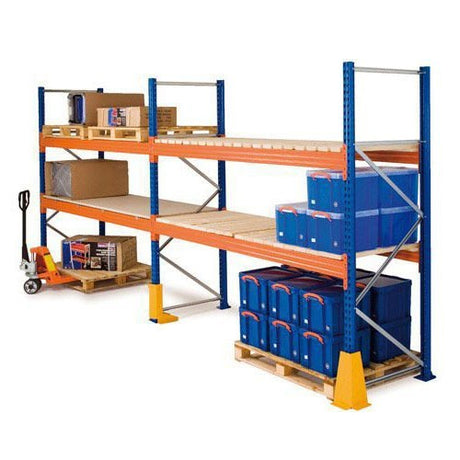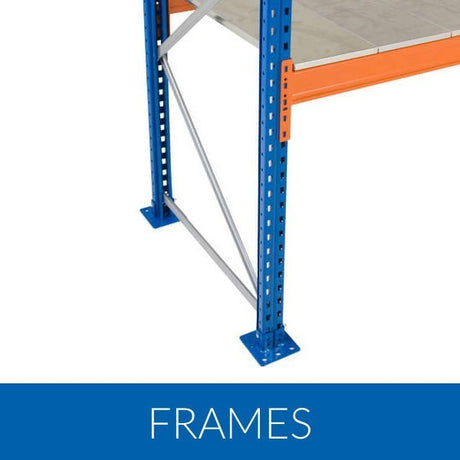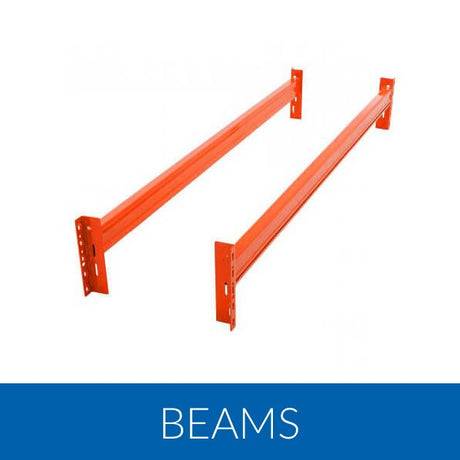Pallet Racking
(5 products)
Pallet racking systems are built from bays, frames, beams, and decks. Starter bays use two frames; continuation bays add one. Beams must support pallet blocks—not edges—for safety. Leave at least 75mm between pallets and 200–300mm between back-to-back rows. Always double-bolt frame feet for stability. If standard sizes (900mm or 1100mm depth) don’t fit your pallets, we offer custom frames and decking to suit your needs.
Safety & Layout Tips
For safe layouts, use a 1m x 2.8m footprint per pallet and consider underpasses for long runs. Keep beam heights under 1600mm and follow forklift aisle width guidelines. Rack heights above 8m slow operations; aim for 5–8m unless using narrow aisle systems. Damaged racking must be replaced—cold rolled steel loses strength after impact. Use green/amber/red markers to monitor safety, and never ignore red alerts. Proper driver training and rest breaks are key to preventing accidents.









